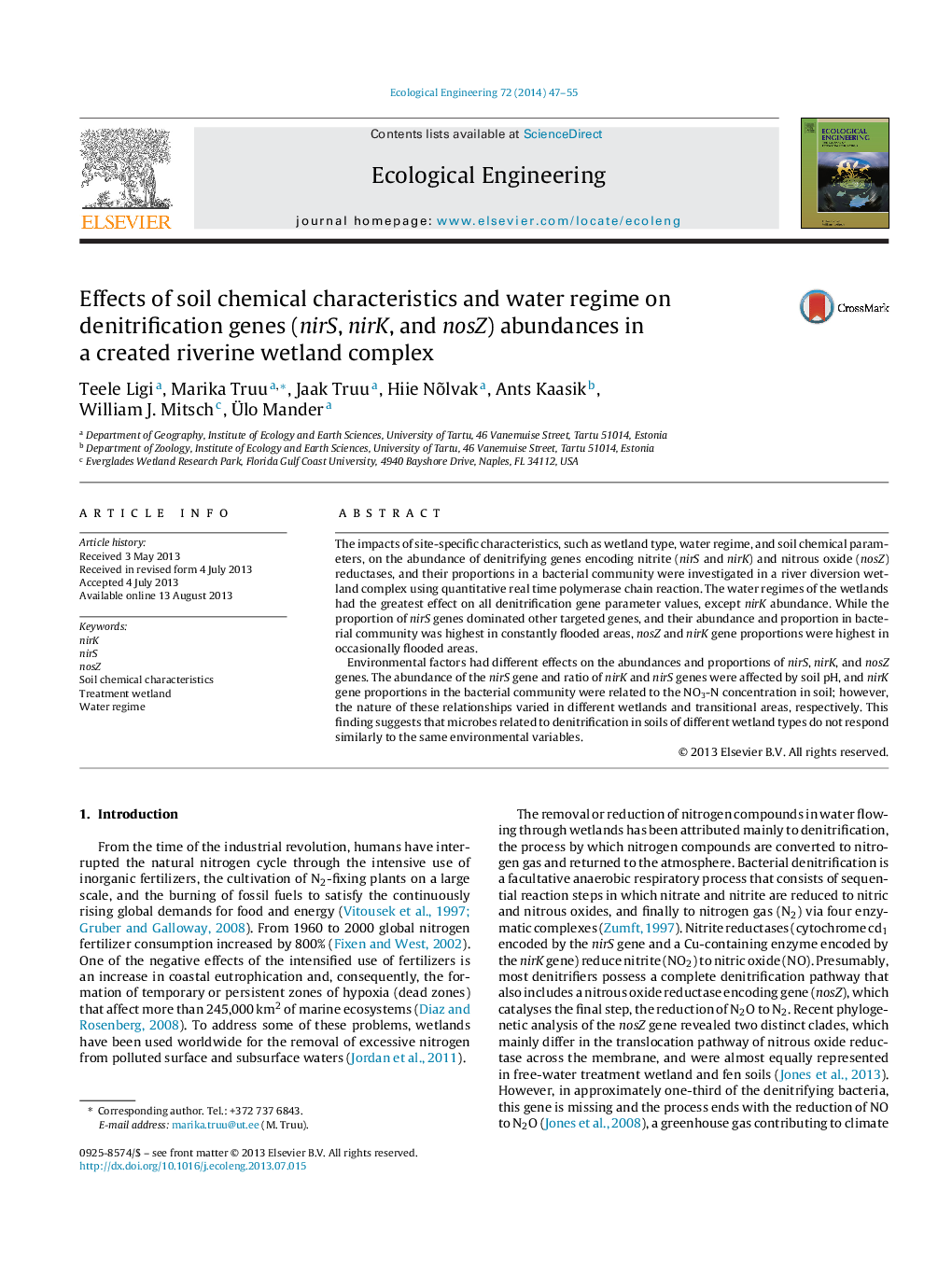| Article ID | Journal | Published Year | Pages | File Type |
|---|---|---|---|---|
| 4389358 | Ecological Engineering | 2014 | 9 Pages |
•Denitrification potential in wetlands soil is dependent on hydrological conditions.•NirS-type denitrifiers dominated in all the studied wetlands soils.•Proportions of nirK and nosZ genes were higher in the occasionally flooded areas.•Soil chemical composition affected different genes specifically in wetlands soils.•The nature of the gene–environment relationships differed in various environments.
The impacts of site-specific characteristics, such as wetland type, water regime, and soil chemical parameters, on the abundance of denitrifying genes encoding nitrite (nirS and nirK) and nitrous oxide (nosZ) reductases, and their proportions in a bacterial community were investigated in a river diversion wetland complex using quantitative real time polymerase chain reaction. The water regimes of the wetlands had the greatest effect on all denitrification gene parameter values, except nirK abundance. While the proportion of nirS genes dominated other targeted genes, and their abundance and proportion in bacterial community was highest in constantly flooded areas, nosZ and nirK gene proportions were highest in occasionally flooded areas.Environmental factors had different effects on the abundances and proportions of nirS, nirK, and nosZ genes. The abundance of the nirS gene and ratio of nirK and nirS genes were affected by soil pH, and nirK gene proportions in the bacterial community were related to the NO3-N concentration in soil; however, the nature of these relationships varied in different wetlands and transitional areas, respectively. This finding suggests that microbes related to denitrification in soils of different wetland types do not respond similarly to the same environmental variables.
